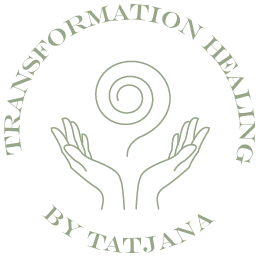Author: Dejana Vorkapić
During my training, I wanted to explore more deeply how exactly I, as a therapist, can help a client achieve emotional, psychological, and physical well-being. What truly interested me was how this works on a physical level and why miraculous healings of certain chronic symptoms occur, as I have personally experienced physical healing after some treatments and therapies. This made me wonder why somatic therapy is called somatic and how it affects the body.
I became intrigued by how our nervous system functions and how it impacts an individual’s body. Of course, this is a highly complex topic, and the nervous system is so intricate and multifaceted that it seems we still don’t fully understand all its capabilities and functions today. When trauma occurs, it breaches the window of tolerance, within which the natural rhythm moves safely between parasympathetic and sympathetic activation, creating a healthy balance as individuals face daily life challenges. When I talk about the sympathetic nervous system, it refers to states of heightened activity, alertness, and adrenaline, while the parasympathetic system is associated with states of relaxation, calmness, and passivity. Such a balanced nervous system functions safely and holistically.
In trauma, a person experiences an overwhelming event, unable to process its intensity through their nervous system, breaching their window of tolerance. What typically occurs then is an overly active sympathetic or parasympathetic response. The person, I would say, becomes fragmented, with their emotions, thoughts, behavior, ideas, and images no longer communicating effectively. It is possible for someone to shut off emotionally, no longer feeling anything from that moment onward, either partially or entirely. They might become hyperactive, remaining in a fight-or-flight state driven by the sympathetic system, or they may shut down, with the parasympathetic system keeping them frozen, disconnected, and unmotivated.
According to Peter Levine’s SIBAM model, in therapy, the client gradually gains a sense of safety with the therapist, who mirrors calmness, acceptance, and provides a secure space. This allows the overwhelming process to be safely navigated. What’s fascinating to me is that through this kind of work, physical healing and changes in the body often occur.
For example, mindfulness techniques activate the parasympathetic system, helping individuals relax, slow their heart rate and breathing, calm strong emotions, regulate their emotional state, and create a larger “container” for the emotional processes they are going through. These tools are incredibly powerful, influencing not just the emotional state and the nervous system but also physical processes in the body. When the sympathetic and parasympathetic systems are balanced, people breathe normally, have regular heart rhythms, normalized blood pressure, balanced digestion, and proper kidney and bladder function. Stress, which we encounter daily, often keeps the sympathetic system more active. Mindfulness techniques help activate the parasympathetic system, balancing the nervous system by calming the sympathetic side.
When the sympathetic and parasympathetic nervous systems are in balance, they provide just the right amount of activity and calmness to the body. If one becomes overactive, as mentioned earlier, it creates a challenging state for us, not just emotionally but also physically and mentally. When the body is balanced by the nervous system, it functions healthily, positively influencing blood, organs, and cells. We sleep better, digest food more easily, breathe effortlessly, move with greater ease, and perform daily tasks more efficiently.
So, what happens in somatic therapy or energy healing? All mammals, including humans, have a polyvagal system, based on the polyvagal theory developed by Dr. Stephen Porges. This theory explains the development of the nervous system, specifically the ventral vagus nerve, which evolved after the dorsal nervous system, found in all animals. The ventral vagus nerve, unique to mammals and humans, extends from the neck to the front of the body, while the dorsal nerve runs along the back. The nervous system sends signals to and from the brain, communicating with the organs and the rest of the body.
Mammals, including humans, are social beings who communicate and exchange information in unique ways. Babies, for instance, regulate their nervous system through contact with their mother’s, as they are born with an underdeveloped nervous system. Early developmental trauma can lead to traumatic experiences being locked in the body, remaining frozen there. In therapy, with a therapist who provides a safe space, the individual “unfreezes” and heals. Communication between the client and therapist occurs through the ventral vagus nerve, which regulates the entire nervous system, balancing the sympathetic, parasympathetic, and dorsal vagus nerves. The dorsal vagus, mentioned earlier, is activated during trauma and is responsible for extreme parasympathetic or sympathetic reactions. The ventral vagus harmonizes the whole system, leading to physical and emotional healing.
Interestingly, during illness caused by bacteria or viruses, the body recognizes these as threats, activating the nervous system to support the immune system. The body’s two key defense systems, the immune and nervous systems, work together. When the immune system detects a pathogen, it releases cytokines, signaling molecules that activate immune cells and influence the autonomic nervous system. The autonomic system consists of two main parts: the sympathetic system, which activates during stress (releasing adrenaline), and the parasympathetic system, which calms the body. During an infection, the sympathetic system becomes active, releasing adrenaline to help the body fight off the infection.
The immune and nervous systems communicate with each other, helping the body respond quickly to threats. Since mindfulness activates the parasympathetic system, I conclude that practices like mindfulness directly influence an individual’s physical health.
In a safe therapeutic space with a therapist offering unconditional support, the individual, through the ventral vagus nerve, balances the sympathetic, parasympathetic, and dorsal vagus nerves, harmonizing the entire nervous system and optimizing bodily functions. My recommendation: hug, touch, meditate, and be gentle with one another. This will lead to health through the nervous system and the ventral vagus.
If you feel the need for somatic therapy, contact Dejana at nedualnost@gmail.com.

